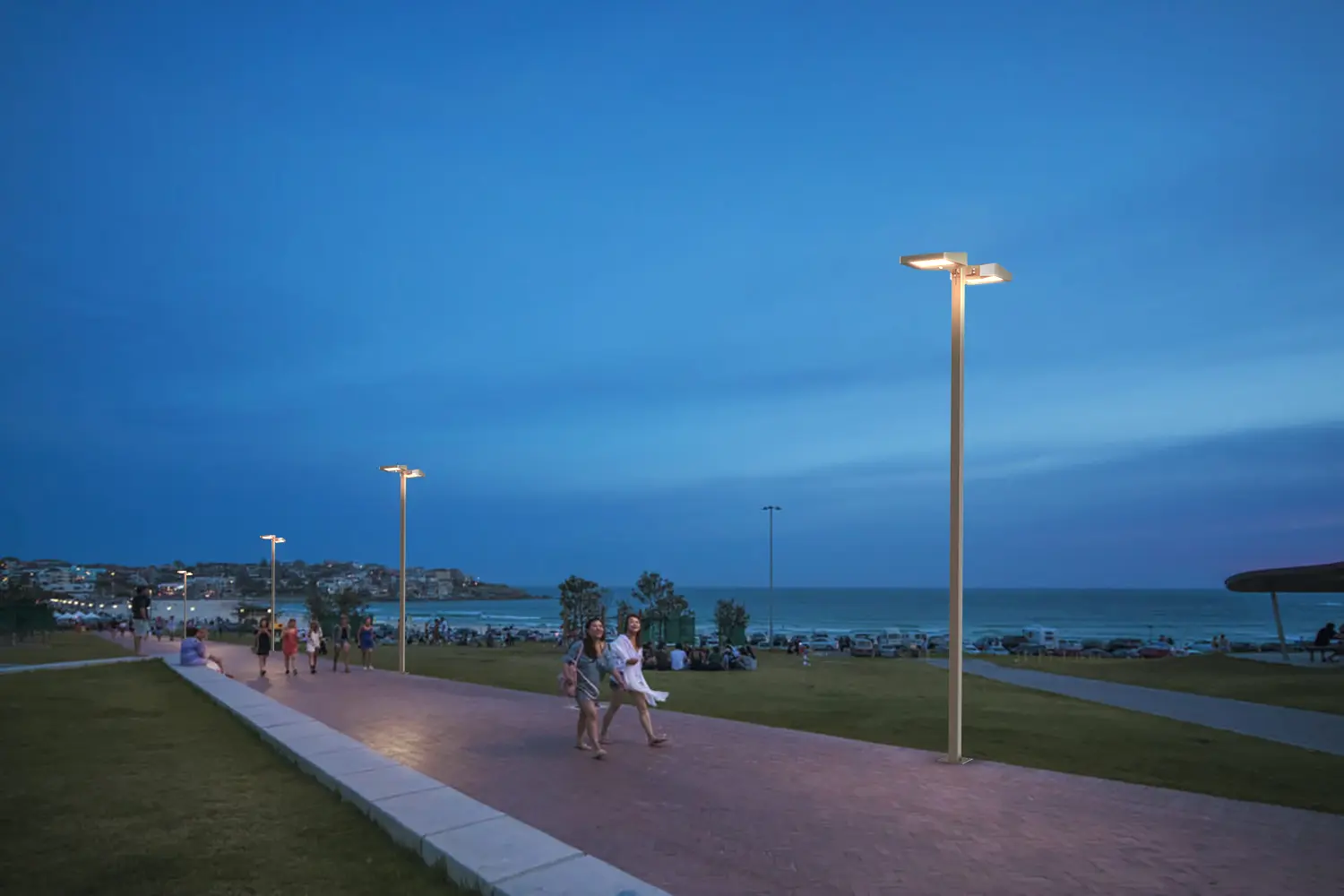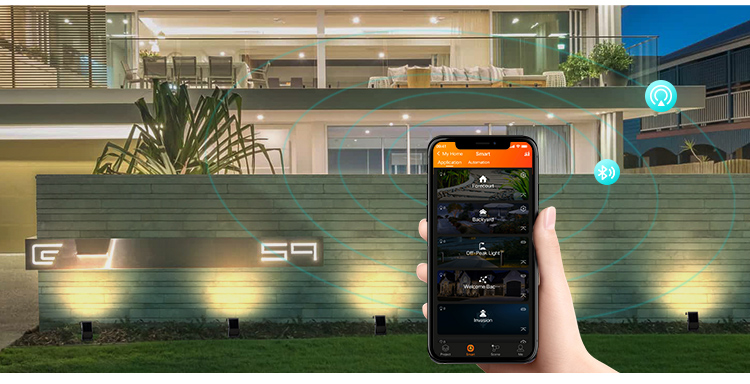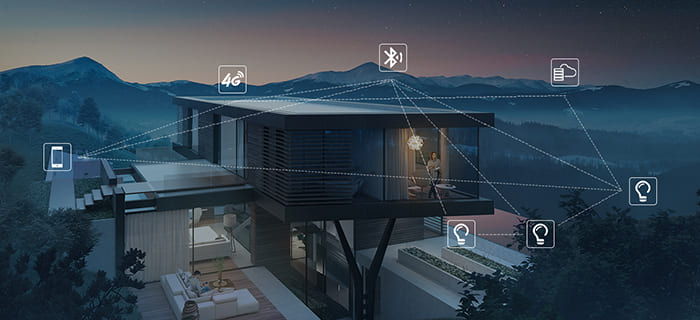With rapid urbanization and growing environmental concerns, the need for sustainable and efficient solutions has never been more pressing. Smart solar lighting is responding to these challenges as a revolutionary technology. By combining energy efficiency with advanced technology, companies like SOTTLOT are leading the way in promoting safer, greener communities. This article will delve into the multifaceted role of smart solar lights in community development, with a special focus on their environmental and safety contributions.
Introduction to Smart Solar Lighting
Smart solar lighting systems combine renewable solar energy with intelligent control to provide innovative solutions for both urban and rural lighting needs. Unlike conventional systems, these luminaires integrate energy storage, motion sensors, and app-based management to optimize performance. In recent years, with advances in solar and smart technologies, these systems have evolved from niche solutions to mainstream applications.
Key benefits include:
- Zero-emission: Utilizing solar power eliminates the need for grid power, dramatically reducing the carbon footprint.
- Energy Independence: Communities can generate their own electricity, reducing reliance on non-renewable resources.
- Cost Savings: Through the benefits of low maintenance costs and no electricity bills, solar smart lights are a cost-effective solution over their lifecycle.
Smart solar lighting embodies the fusion of environmental responsibility and technological innovation, changing the way we light our surroundings.
Solving Environmental Problems
Reducing Carbon Footprint
Reducing greenhouse gas emissions is one of the major issues facing the world today. Smart solar lighting dramatically reduces reliance on fossil fuels by generating electricity directly from sunlight through photovoltaic panels. This is highly consistent with the goals of the Paris Agreement.
For example, replacing traditional streetlights with solar lights in a medium-sized city could avoid thousands of tons of CO2 emissions annually.
Promoting Sustainable Development
Deploying solar lighting systems supports broader sustainability programs. By reducing energy consumption and encouraging the use of renewable resources, these systems can enable sustainable urban growth while protecting natural ecosystems.
Supporting Renewable Energy Goals
Solar lighting systems are an important part of the global transition to renewable energy. Their implementation not only reduces energy costs but also provides long-term environmental benefits by setting an example for other industries to adopt cleaner technologies.
Enhancing Community Safety
Preventing Crime Through Smart Lighting
Safety is critical in community building. Proper lighting reduces criminal activity by eliminating the cover of darkness that criminals may utilize. Smart solar-powered lights equipped with motion-sensing capabilities light up only when needed, saving energy while enhancing security.
For example, motion-sensing lights can detect unusual activity in parks or residential areas, making them an important tool for public safety.
Aiding Emergency Response
In an emergency, clear lighting is crucial. Smart lights can guide emergency responders to critical locations through adaptive brightness and automatic activation. Their reliability ensures uninterrupted service during power outages, playing an important role in disaster situations.
Intelligent Control for Smarter Living
Smart solar lighting systems are not only efficient, they’re also smart. By integrating with IoT technology and apps like SOTTLOT’s ADELOT, users gain unprecedented control and customization options.
Motion Sensor and Adaptive Brightness
Motion sensors light up when they detect activity and operate only when needed, ensuring efficient energy use. Adaptive brightness further optimizes efficiency by adjusting lighting levels based on real-time conditions such as foot or vehicle traffic.
Community Case Studies
Globally, communities that have adopted smart lighting have reported significant safety and cost-effective improvements. For example, pilot programs in urban neighborhoods have shown a 30% reduction in energy use and significant reductions in nighttime crime.
Energy Efficiency and Cost Savings
Comparison to Traditional Lighting Systems
Conventional lighting systems rely on a constant supply of electricity, resulting in high operating costs. In contrast, solar smart lights operate independently of the grid, minimizing energy costs and easing the pressure on municipal budgets.
Economic Benefits
While the initial investment in solar smart lights may be high, the long-term energy and maintenance savings more than make up for it. Communities that adopt these systems typically recoup their investment within a few years, making them an economically sound option.
Customizable and Scalable Solutions
The adaptability of smart lighting systems makes them suitable for a variety of application scenarios, from small residential environments to extensive urban projects.
Main Application Scenarios:
- Urban centers: To provide reliable lighting for streets, parks, and public spaces.
- Rural areas: Improve safety and connectivity in off-grid areas.
- Commercial locations: To enhance the ambiance and functionality of hotels, resorts, and retail centers.
The scalability of these systems ensures they can expand as community needs grow.
Enhancing Community Aesthetics
Lighting is not only functional, it’s also an important part of design. SOTTLOT’s products, such as the ADELOT and SOLARAXY series, offer aesthetically pleasing options that blend seamlessly into the urban landscape. While providing great functionality, these systems add attractiveness and vibrancy to communities.
Sustainability in Community Planning
Green Building Certification
Integrating smart solar lights into construction projects has helped communities achieve certifications such as LEED (Leadership in Energy and Environmental Design). These certifications emphasize a commitment to sustainability and attract environmentally conscious residents and businesses.
Collaboration with Planners
By working with city planners, developers can ensure the optimal placement of lighting systems to maximize their efficiency and aesthetic appeal.
SOTTLOT‘s Contribution to Intelligent Lighting
As an industry leader, SOTTLOT develops innovative solutions that set new standards. Its products, such as ADELOT and SOLARAXY, combine advanced AI and IoT capabilities to ensure unrivaled efficiency and user experience.
Utilizing the ADELOT App
The ADELOT app simplifies the management of lighting systems with features such as real-time monitoring, scheduling, and centralized control.
Adoption Challenges and Solutions
Despite the significant benefits, smart lighting rollouts face high initial costs and integration issues, which SOTTLOT effectively addresses by providing training, support, and financing options.
Future Prospects and Innovation
The future of smart solar lighting lies in the continued integration of AI and IoT. Innovations such as voice control, gesture recognition, and enhanced energy storage will lead to more efficient and interactive systems.
Why Choose SOTTLOT?
For customers, SOTTLOT offers a one-stop shop from product customization to marketing support. Its global reach and strong supply chain make it a reliable partner for large-scale projects.
Frequently Asked Questions about Smart Solar Lighting
How do smart solar lights reduce energy consumption?
By utilizing solar energy and smart controls, these systems ensure efficient use of energy.
Are Smart Solar Lights suitable for all weather conditions?
Yes, SOTTLOT products are designed to be durable and can operate in all weather conditions.
What is the lifespan of SOTTLOT products?
With proper maintenance, they have a lifespan of more than ten years.
Smart solar lighting is not only a technological innovation; it is a commitment to a sustainable and secure future. Companies like SOTTLOT are leading the way for communities around the world to enjoy a greener, safer, and smarter living environment.



